Under the Sea: Marine Life Drawing Tips
Welcome to the fascinating world of marine life drawing! If you've ever gazed into the depths of the ocean and marveled at the vibrant colors and intricate forms of underwater creatures, you know just how captivating they can be. Drawing marine life isn't just about replicating what you see; it’s about capturing the essence and spirit of these incredible beings. In this article, we’ll explore essential techniques and tips that will elevate your skills and help you create stunning artwork that reflects the beauty of the underwater world.
To draw marine life effectively, it's crucial to understand the diversity and anatomy of underwater creatures. The ocean is home to a vast array of species, each with its unique characteristics. From the graceful movements of a dolphin to the intricate patterns of a tropical fish, every marine animal has a story to tell. By familiarizing yourself with the different types of marine animals, you can better appreciate their forms and behaviors, which will ultimately enhance your drawings. For instance, consider the difference between a sleek shark and a vibrant clownfish; each requires a different approach in terms of texture, color, and anatomy.
Choosing the right materials can significantly impact your drawings. The tools you select will play a pivotal role in how effectively you can capture the essence of marine life. Here’s a quick list of essential materials you might want to consider:
- Pencils: A range of hardness levels, from 2H for fine details to 6B for deep shadows.
- Colored Pencils or Watercolors: Perfect for bringing the vibrant colors of marine life to life.
- Sketchbook: Choose high-quality, acid-free paper that can handle various mediums.
- Erasers: A kneaded eraser is great for lifting graphite without damaging the paper.
Investing in quality materials can make a significant difference in your artistic process, allowing you to create more dynamic and engaging illustrations.
Observation is key to realism in drawing. To truly capture the beauty of marine life, you must learn to observe these creatures in their natural habitat. Pay close attention to their movements, colors, and forms. For example, notice how a jellyfish glides gracefully through the water, its tentacles trailing behind like delicate ribbons. Observing marine life can be done through various means, such as visiting aquariums, snorkeling, or even watching documentaries. The more you immerse yourself in the underwater world, the better your understanding will be, leading to more accurate and lifelike drawings.
Before diving into detailed drawings, mastering basic sketching techniques is essential. Start with simple shapes and forms to lay the groundwork for more complex marine life illustrations. Practice drawing basic outlines of different marine animals, focusing on their proportions and anatomy. For instance, a fish can be broken down into simple shapes like ovals and triangles. Once you are comfortable with the basics, gradually introduce details such as fins, scales, and facial features. Remember, practice makes perfect, so don't be afraid to make mistakes along the way!
Understanding color theory is vital for depicting the vibrant hues of underwater environments. Marine life is often characterized by a stunning array of colors, and knowing how to mix and apply these colors can elevate your artwork. For example, studying the complementary colors of a clownfish and its anemone can help you create a striking contrast in your drawing. Experiment with different color combinations and shading techniques to find what works best for your style. A well-executed color palette can breathe life into your marine illustrations.
To give your drawings a three-dimensional feel, mastering depth and perspective is essential. This can be achieved through techniques such as overlapping elements, varying sizes, and using lighter or darker shades to indicate distance. For instance, objects that are closer to the viewer should appear larger and more detailed, while those further away should be smaller and less distinct. Incorporating these techniques will add realism and depth to your marine life drawings, making them more engaging to the viewer.
The background plays a significant role in marine life drawings. A well-crafted background can enhance the overall composition and provide context for the subject. Consider including elements like coral reefs, seaweed, or the ocean floor to create a more immersive scene. When drawing these elements, remember to keep the focus on your main subject while still providing enough detail in the background to complement it. This balance will help your artwork feel cohesive and dynamic.
Developing a unique artistic style takes time and practice. The key is to experiment with different techniques and approaches to find what resonates with you. Try drawing various marine species, each with distinct characteristics, to broaden your skills. Consider joining art classes or online communities where you can share your work and receive constructive feedback. Remember, every artist has their journey, so embrace the process and enjoy the exploration of your creative potential!
Q: What is the best way to start drawing marine life?
A: Begin by observing marine life in its natural habitat. Take notes and sketch simple shapes to familiarize yourself with their forms.
Q: Do I need expensive materials to draw marine life?
A: Not necessarily! While quality materials can enhance your work, you can start with basic supplies and gradually upgrade as you improve.
Q: How can I develop my unique style in marine life drawing?
A: Experiment with various techniques, study different artists, and practice regularly. Over time, you’ll find what works best for you!
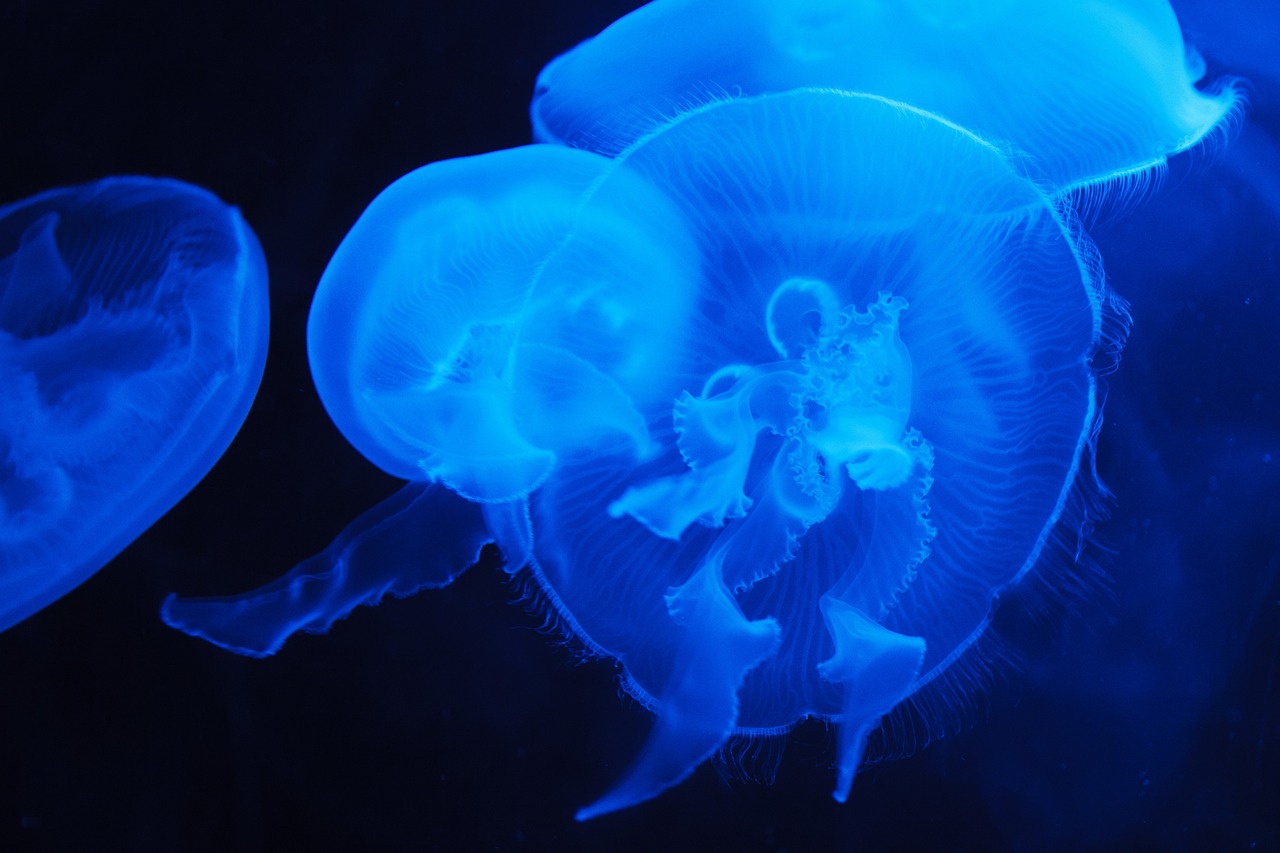
Understanding Marine Life
To truly capture the essence of marine life in your drawings, you need to dive deep—figuratively speaking, of course! Understanding marine life goes beyond just recognizing the various creatures that inhabit our oceans; it involves appreciating their diversity, anatomy, and the unique environments they thrive in. The ocean is a vast, intricate ecosystem teeming with life, from the tiniest plankton to the majestic blue whale. Each species has its own set of characteristics that make it special, and grasping these details can elevate your artwork from mere representation to a vivid portrayal of life beneath the waves.
Let’s start with the different categories of marine animals. Broadly speaking, marine life can be classified into three main groups:
- Fish: These gilled creatures come in countless shapes, sizes, and colors. From the vibrant clownfish hiding among anemones to the sleek barracuda, understanding their anatomy, such as fins, scales, and body shape, is crucial for accurate representation.
- Mammals: Marine mammals like dolphins, whales, and seals are warm-blooded and breathe air. Their unique features, such as blubber for insulation and streamlined bodies for swimming, should be noted to capture their essence.
- Invertebrates: This group includes fascinating creatures like jellyfish, octopuses, and sea urchins. Their lack of a backbone means they often have unusual body structures, which can be both challenging and rewarding to draw.
When you observe these marine animals, pay attention to their behaviors and habitats. For instance, consider how a sea turtle glides gracefully through the water versus how a crab scuttles along the ocean floor. Each creature has its own movement patterns that can inspire dynamic poses in your drawings. Additionally, the colors of marine life can be astonishingly vibrant or surprisingly muted, depending on their environment. This is where your understanding of color theory will come into play, as you'll want to accurately depict the hues that define each species.
Moreover, understanding the habitats of these creatures—be it coral reefs, open ocean, or deep sea—will help you create a more immersive experience in your artwork. The interplay between the animals and their environments can add layers of meaning to your pieces. For example, illustrating a clownfish nestled in an anemone not only highlights the fish's colors but also tells a story of symbiosis and survival.
In conclusion, grasping the complexities of marine life is essential for any artist looking to draw these captivating creatures. By delving into their anatomy, behavior, and habitats, you can bring a sense of realism and vibrancy to your artwork that reflects the true beauty of life under the sea.
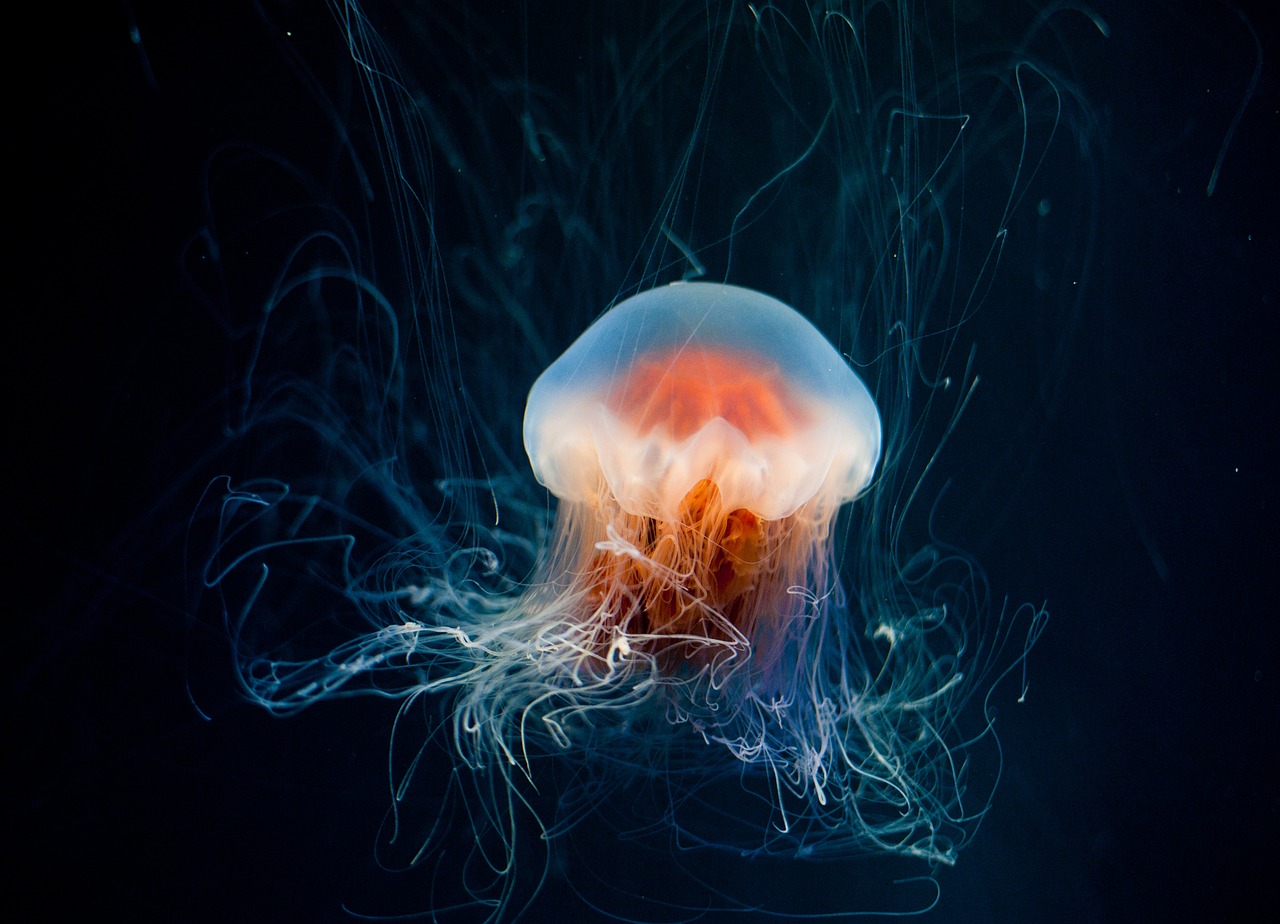
Essential Drawing Materials
When it comes to capturing the enchanting world of marine life on paper, the right tools can make all the difference. Imagine trying to paint the vibrant colors of a clownfish without the right palette or sketching the intricate details of a jellyfish with a dull pencil. It’s like trying to catch a wave with a surfboard that has a hole in it—frustrating and unproductive. So, let’s dive into the essential drawing materials that will help you bring the beauty of the ocean to life in your artwork!
First and foremost, pencils are your best friends. A range of graphite pencils, from H (hard) to B (soft), provides a spectrum of hardness that allows you to create everything from fine lines to deep shadows. For example, a 2H pencil is perfect for light sketching, while a 6B pencil can help you achieve those rich, dark areas that make your marine creatures pop. Don’t forget to keep a good quality eraser handy; it’s essential for correcting mistakes and refining your sketches.
Next up, let’s talk about paper. The texture and weight of your paper can dramatically affect your artwork. For marine life, a smooth bristol paper is a fantastic choice, as it allows for fine detail and clean lines. If you plan to use watercolors or inks, consider using watercolor paper, which can withstand the moisture without warping. Here’s a quick comparison of paper types:
| Paper Type | Best For | Texture |
|---|---|---|
| Bristol | Pencil and ink drawings | Smooth |
| Watercolor | Watercolor painting | Textured |
| Sketchbook | Quick sketches and studies | Varies |
As you progress in your marine life drawing journey, you might want to experiment with colored pencils or watercolors. These mediums allow you to capture the vibrant hues found beneath the waves. When selecting colored pencils, opt for high-quality brands that offer a wide range of colors and good blending capabilities. Watercolors, on the other hand, can create stunning washes that mimic the fluidity of water, perfect for depicting the shimmering surface of the ocean or the delicate transparency of a sea creature.
Additionally, consider investing in brushes and palettes if you decide to work with watercolors. A variety of brush sizes will give you the flexibility to create detailed lines or broad washes. A mixing palette is essential for blending colors to achieve the exact shades you want, especially when trying to replicate the iridescent colors of a fish or the soft pastels of a coral reef.
Finally, don’t underestimate the power of reference materials. Having books, photographs, or even videos of marine life can provide invaluable insight into the anatomy, colors, and behaviors of the creatures you wish to draw. Observing these references closely will enhance your understanding and help you depict your subjects with greater accuracy. Remember, the ocean is full of surprises, and every creature tells a story through its form and color!
In conclusion, having the right drawing materials is crucial for any artist looking to explore the depths of marine life. From pencils and paper to brushes and reference materials, each tool plays a significant role in your artistic journey. So gather your supplies, get inspired, and let your creativity flow like the tides!
- What type of pencil is best for drawing marine life? A range of pencils, including both hard (H) and soft (B) pencils, is ideal. A 2H for light sketches and a 6B for dark areas work well.
- Can I use regular paper for watercolors? It's best to use watercolor paper, which can handle moisture without warping.
- Do I need to use colored pencils for marine life? While not necessary, colored pencils can help you capture the vibrant colors of marine creatures effectively.
- Where can I find reference materials for marine life? Books, online resources, and documentaries are excellent sources for reference materials.

Observation Techniques
When it comes to capturing the essence of marine life in your drawings, the most powerful tool you have at your disposal is your ability to observe. Observation isn't just about looking; it's about seeing. It's about immersing yourself in the underwater world and understanding the intricate details that make each creature unique. Think of it as being a detective in a watery wonderland, piecing together clues that will bring your artwork to life.
To enhance your observation skills, consider the following techniques that can help you notice the subtle nuances of marine life:
- Study Movement: Marine animals are often in constant motion. Whether it's the graceful glide of a fish or the slow undulation of a jellyfish, pay attention to how they move. Try sketching their movements in quick succession to capture their fluidity.
- Focus on Color: The underwater world is a kaleidoscope of colors. Take time to observe how light interacts with water and how it affects the colors of marine creatures. Notice how some colors become more vibrant in shallow waters while others fade in deeper areas.
- Analyze Anatomy: Each marine creature has a unique anatomy that defines its shape and structure. Spend time studying the proportions and features of different species. For instance, the streamlined body of a dolphin versus the intricate shell of a sea turtle. Understanding these differences will improve your accuracy in drawing.
Additionally, consider these practical tips to enhance your observation techniques:
- Visit Aquariums: Aquariums offer a fantastic opportunity to observe marine life up close. Take a sketchbook and spend time drawing the creatures as they swim. This real-life practice can significantly improve your skills.
- Watch Documentaries: Documentaries about marine life can provide insights into behaviors and habitats that you might not see in person. Pay attention to the details presented and try to replicate them in your drawings.
- Use Reference Photos: If you can't access marine life directly, high-quality reference photos can be invaluable. Look for images that showcase various angles and lighting conditions to better understand the subject.
Remember, the goal of observation is not just to replicate what you see but to interpret it through your artistic lens. Each observation can spark creativity, leading you to new ideas and techniques that will enrich your artwork. So, grab your sketchbook, and dive into the world beneath the waves—there's a treasure trove of inspiration waiting for you!
Q1: How can I improve my observation skills for drawing marine life?
A1: Practice is key! Spend time observing marine life in various settings, whether in aquariums, during snorkeling, or through documentaries. Keep a sketchbook handy to jot down notes and sketches of what you see.
Q2: What materials should I use for underwater observation?
A2: A waterproof sketchbook and pencils or waterproof pens can be useful for drawing in wet environments. If you're sketching in an aquarium, regular sketching supplies will suffice.
Q3: Can I use photos for reference instead of drawing from life?
A3: Absolutely! Reference photos are a great way to study marine life when you can't observe them in person. Just ensure that the photos are high-quality and capture the details you want to replicate.

Sketching Basics
When it comes to drawing marine life, the serve as the foundation for all your artistic endeavors. Think of sketching as the blueprint for a magnificent underwater palace; without a solid base, the entire structure risks collapsing. So, how do you build that base? It starts with understanding the fundamental techniques that will guide your hand and sharpen your eye.
First and foremost, proportions play a crucial role in creating realistic sketches. Whether you’re capturing the sleek body of a dolphin or the intricate fins of a clownfish, getting the proportions right is key. A helpful tip is to use basic shapes to outline your marine creatures. For instance, start with ovals for the body and triangles for fins. This method not only simplifies the process but also allows you to focus on the overall form before diving into details.
Next, let’s talk about line quality. The lines you use can convey a lot about the subject you’re drawing. Thick, bold lines can suggest strength and movement, while softer, lighter lines can evoke a sense of delicacy and grace. Experimenting with different types of lines can add depth and personality to your sketches. For instance, when drawing the flowing tentacles of a jellyfish, consider using wavy lines to mimic their gentle, undulating motion.
Another essential aspect of sketching is shading. Shading adds dimension and realism to your drawings, allowing them to pop off the page. To master shading, practice using various techniques such as hatching, cross-hatching, and stippling. Each technique produces different textures and effects. For example, when sketching the rough surface of a rock or coral, stippling can create a gritty look, whereas smooth shading might be more suitable for the sleek surface of a fish.
Moreover, don’t forget to incorporate gesture drawing into your practice. This technique focuses on capturing the essence of a subject in a short amount of time. Set a timer for one to five minutes and quickly sketch the marine life you see, focusing on their movement and posture. This practice not only improves your speed but also enhances your ability to capture the dynamic nature of underwater creatures.
Lastly, remember that practice makes perfect. The more you sketch, the more comfortable you’ll become with the various techniques. Consider setting aside time each week to draw different marine animals, experimenting with styles and methods. You might even want to keep a sketchbook dedicated to marine life, where you can track your progress and revisit your favorite sketches.
In summary, mastering the basics of sketching is essential for any aspiring marine life artist. By focusing on proportions, line quality, shading, gesture drawing, and consistent practice, you’ll be well on your way to creating stunning underwater illustrations that capture the beauty of the ocean.
- What materials do I need for sketching marine life? A good sketchbook, pencils of varying hardness, and an eraser are essential. You might also want colored pencils or watercolors for later stages.
- How can I improve my observation skills? Spend time observing marine life in aquariums or nature. Take notes and sketch what you see to enhance your understanding.
- Is it necessary to draw from life? While drawing from life is incredibly beneficial, using reference photos can also be effective. Just ensure they are high-quality images.
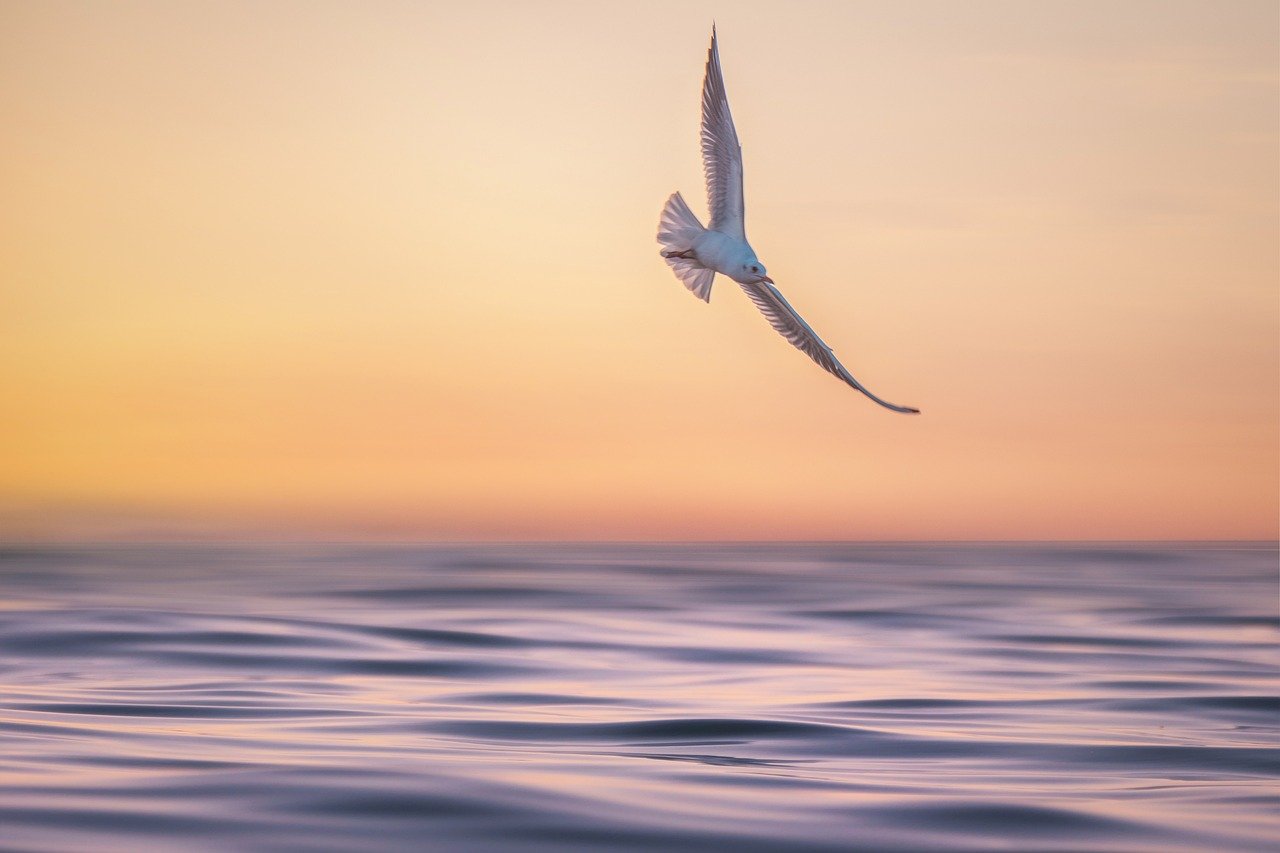
Color Theory for Marine Life
When it comes to drawing marine life, understanding color theory is not just a bonus; it’s a necessity. Imagine diving into the ocean and witnessing the vibrant hues of coral reefs, the shimmering scales of fish, and the gentle gradients of the deep blue sea. Each of these colors tells a story, and as an artist, you have the power to convey that story through your artwork. So, how do you capture the essence of these underwater colors effectively?
First and foremost, it's essential to grasp the basic principles of color theory. Colors can be classified into three primary categories: primary, secondary, and tertiary. Primary colors (red, blue, and yellow) can be mixed to create secondary colors (green, orange, and purple). Tertiary colors are formed by mixing a primary color with a secondary color. Understanding this color wheel can help you create a harmonious palette that reflects the beauty of marine life.
Next, consider the temperature of colors. Warm colors (like reds and oranges) can bring energy and vibrancy to your drawings, while cool colors (such as blues and greens) evoke calmness and tranquility. For instance, when illustrating a vibrant clownfish against the backdrop of a warm coral reef, using warm tones for the reef and cool tones for the fish can create a stunning contrast that draws the viewer's eye.
Moreover, the concept of complementary colors is vital in marine life drawing. Complementary colors are those that sit opposite each other on the color wheel. Utilizing these colors together can create a striking visual impact. For example, pairing a bright orange with a deep blue can make both colors pop, enhancing the overall vibrancy of your artwork. This technique can be particularly useful when depicting underwater scenes where the interplay of light and shadow plays a crucial role.
In addition to these foundational principles, color mixing is an art in itself. As you experiment with different mediums—be it watercolor, acrylics, or colored pencils—try mixing colors on your palette before applying them to the paper. This not only gives you a better understanding of how colors interact but also allows you to achieve the desired saturation and brightness that marine life exhibits. For instance, the subtle gradients seen in tropical fish can be replicated by layering translucent washes of color, gradually building up to the desired effect.
Finally, don't forget about the importance of light in your marine illustrations. The way light interacts with water can dramatically alter the appearance of colors. For example, sunlight filtering through the surface can create beautiful patterns and reflections, often resulting in a shimmering effect. To capture this, consider using lighter shades and highlights strategically placed to mimic the way light dances across the water's surface. This technique can bring your marine life drawings to life, making them feel more dynamic and engaging.
In summary, mastering color theory is an essential step for any artist looking to depict marine life authentically. By understanding the color wheel, experimenting with complementary colors, mixing shades effectively, and considering the effects of light, you can create stunning and realistic underwater illustrations that resonate with viewers. So grab your brushes, dive into those colors, and let the beauty of the ocean inspire your next masterpiece!
- What colors should I use for drawing fish? Consider using a mix of warm and cool colors to create depth and vibrancy. Look at reference images to understand the natural colors of the species you wish to draw.
- How can I achieve realistic water effects in my drawings? Use lighter shades and highlights to represent light reflecting off the water, and experiment with layering techniques to create depth.
- Do I need special materials for marine life drawing? While any quality drawing materials can work, watercolors and acrylics are particularly effective for capturing the fluidity and vibrancy of marine environments.
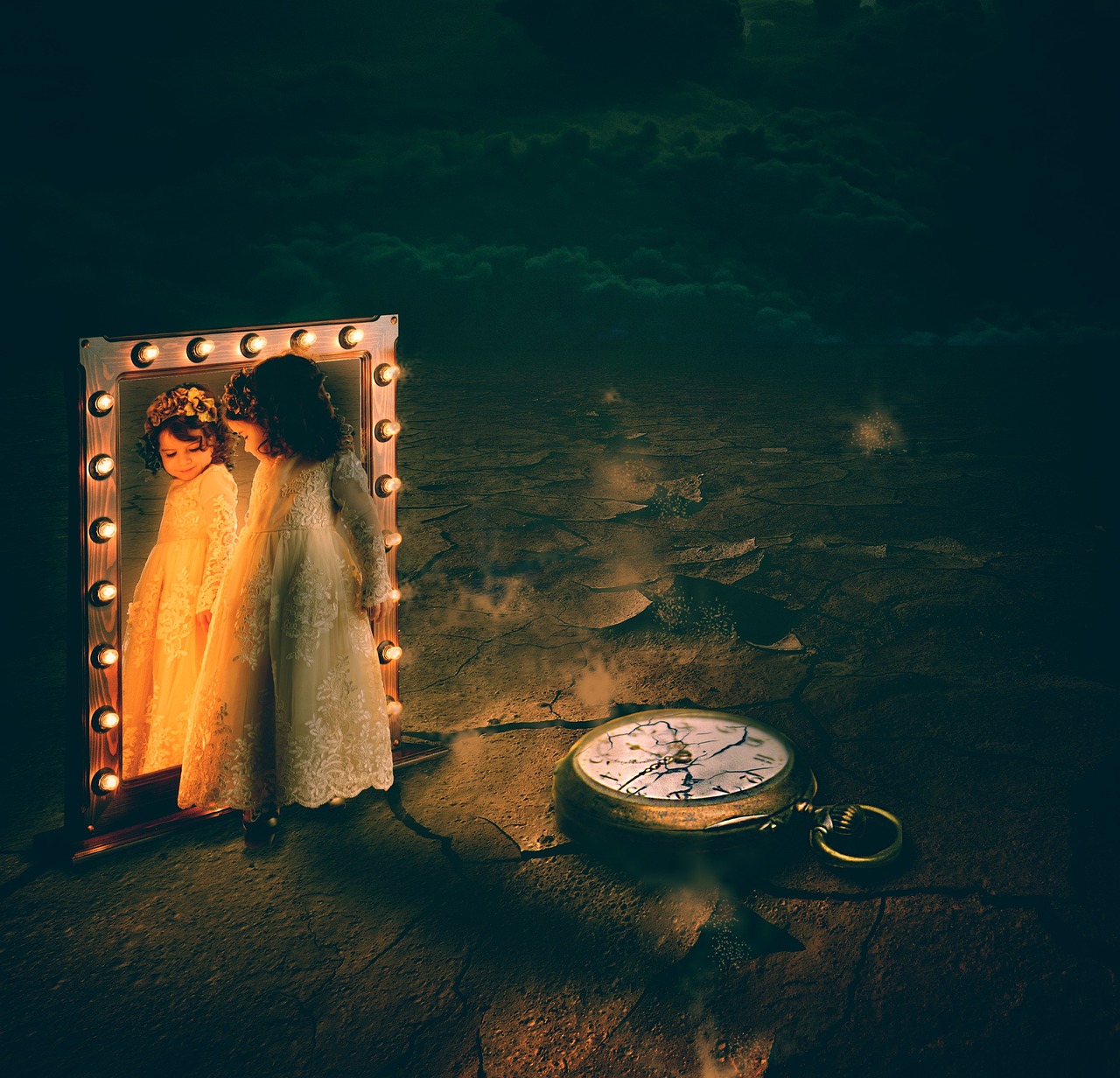
Creating Depth and Perspective
When it comes to drawing marine life, is crucial for making your artwork feel alive and engaging. Just like how a diver experiences the ocean's layers, your drawings should convey that same sense of dimensionality. Imagine looking down into the water and seeing a school of fish darting away, the sunlight filtering through the surface, creating a dance of shadows and light. This is the magic you want to replicate on your canvas!
One of the best ways to achieve depth is through the use of overlapping elements. By placing objects in front of one another, you can create a sense of space. For instance, if you're drawing a coral reef, position some fish in front of the coral while others swim behind it. This simple technique tricks the eye into perceiving distance. Additionally, consider the size variation of your subjects. Objects that are closer should appear larger, while those that are further away should be smaller, mimicking how we perceive the world in real life.
Another effective method to create depth is through atmospheric perspective. This concept involves altering the color and clarity of objects based on their distance from the viewer. As things recede into the background, they tend to lose detail and become lighter in color. For example, the vibrant blue of a dolphin swimming close to the surface should gradually fade into a paler hue as it swims deeper into the ocean. This technique not only enhances the realism of your drawing but also adds a beautiful gradient that mimics the natural world.
Don't forget about light and shadow. The way light interacts with underwater elements can dramatically influence the perception of depth. Use shading techniques to highlight the contours of marine creatures, giving them volume and form. Think about where the light source is coming from—whether it's the sun above or bioluminescent organisms below—and adjust your shadows accordingly. This will add a layer of realism that makes your drawings pop off the page.
To illustrate these principles, consider this simple table that summarizes techniques for depth and perspective:
| Technique | Description |
|---|---|
| Overlapping Elements | Place objects in front of one another to create a sense of space. |
| Size Variation | Make closer objects larger and distant ones smaller. |
| Atmospheric Perspective | Alter color and clarity based on distance from the viewer. |
| Light and Shadow | Use shading to create volume and form, considering the light source. |
Incorporating these techniques into your marine life drawings will not only enhance their aesthetic appeal but also make them more engaging for viewers. Remember, the ocean is a world of infinite beauty and complexity, and your ability to convey its depth will set your artwork apart. So grab your pencils, dive deep into your imagination, and let the underwater wonders inspire your creativity!
- What materials are best for creating depth in marine life drawings?
Using high-quality pencils, blending tools, and specialized papers can help you achieve the desired depth and texture in your artwork. - How can I practice my depth and perspective skills?
Start by sketching from photographs of marine life, focusing on layering and shading techniques to create a sense of distance. - Is it important to study real marine life?
Absolutely! Observing real marine creatures can provide invaluable insights into their anatomy and behavior, helping you depict them more realistically.

Incorporating Background Elements
When it comes to drawing marine life, the background is often an overlooked aspect that can make or break your artwork. Just like a stage set enhances a performance, a well-crafted background can elevate your marine illustrations to new heights. Think of it as the canvas that supports the main actors—your fish, corals, and other sea creatures. Without a captivating background, your subject may feel isolated or disconnected from its environment.
To create a harmonious composition, you should start by considering the underwater ecosystem where your marine life resides. For instance, if you're drawing a vibrant clownfish, placing it among colorful anemones can create a striking visual contrast. Conversely, if you're illustrating a majestic whale gliding through the deep blue, a subtle gradient of blues and greens can evoke the serene depths of the ocean.
Here are some key elements to consider when incorporating backgrounds into your marine life drawings:
- Seascapes: Think about the different layers of the ocean. The surface is filled with light and movement, while the deeper areas offer shadow and mystery. Use these contrasts to enhance your drawings.
- Coral Reefs: These vibrant ecosystems can provide a rich tapestry of colors and shapes. They not only serve as a habitat for many marine species but also add depth and interest to your artwork.
- Textures: The ocean floor is not just sand; it can include rocks, seaweed, and other textures. Incorporating these elements can add realism and depth to your scenes.
Using layers in your artwork can also help create depth. Start with the background, adding elements like soft waves or distant islands. Then, gradually build up to the foreground where your marine life will be drawn. This layering technique can give a sense of perspective that draws the viewer's eye into the scene.
Color plays a crucial role in background elements as well. The hues you choose can affect the mood of your artwork. Bright, vibrant colors can convey a lively, playful underwater scene, while darker, muted tones can evoke a sense of mystery and depth. Experiment with color mixing to find the right palette that complements your marine subjects.
Finally, don’t forget about the role of light in your background. Light can dramatically change the perception of depth and space. Consider where the light source is coming from—whether it’s sunlight filtering through the water or the glow of bioluminescent creatures. This can add an ethereal quality to your illustrations, making them feel more alive and dynamic.
In summary, incorporating background elements into your marine life drawings is essential for creating a balanced and engaging composition. By considering the ecosystem, utilizing layers, playing with color, and manipulating light, you can transform your artwork from simple sketches into breathtaking underwater scenes that captivate your audience.
Q: How important is the background in marine life drawings?
A: The background is crucial as it sets the scene and context for your marine subjects, enhancing the overall composition.
Q: What are some effective techniques for creating depth in backgrounds?
A: Using layers, varying color saturation, and adjusting the light source can all create a sense of depth in your drawings.
Q: Should I use reference images for backgrounds?
A: Absolutely! Reference images can provide inspiration and help you understand the nuances of underwater environments.
Q: How can I make my backgrounds more dynamic?
A: Incorporating movement, such as swirling currents or floating debris, can add dynamism and interest to your backgrounds.
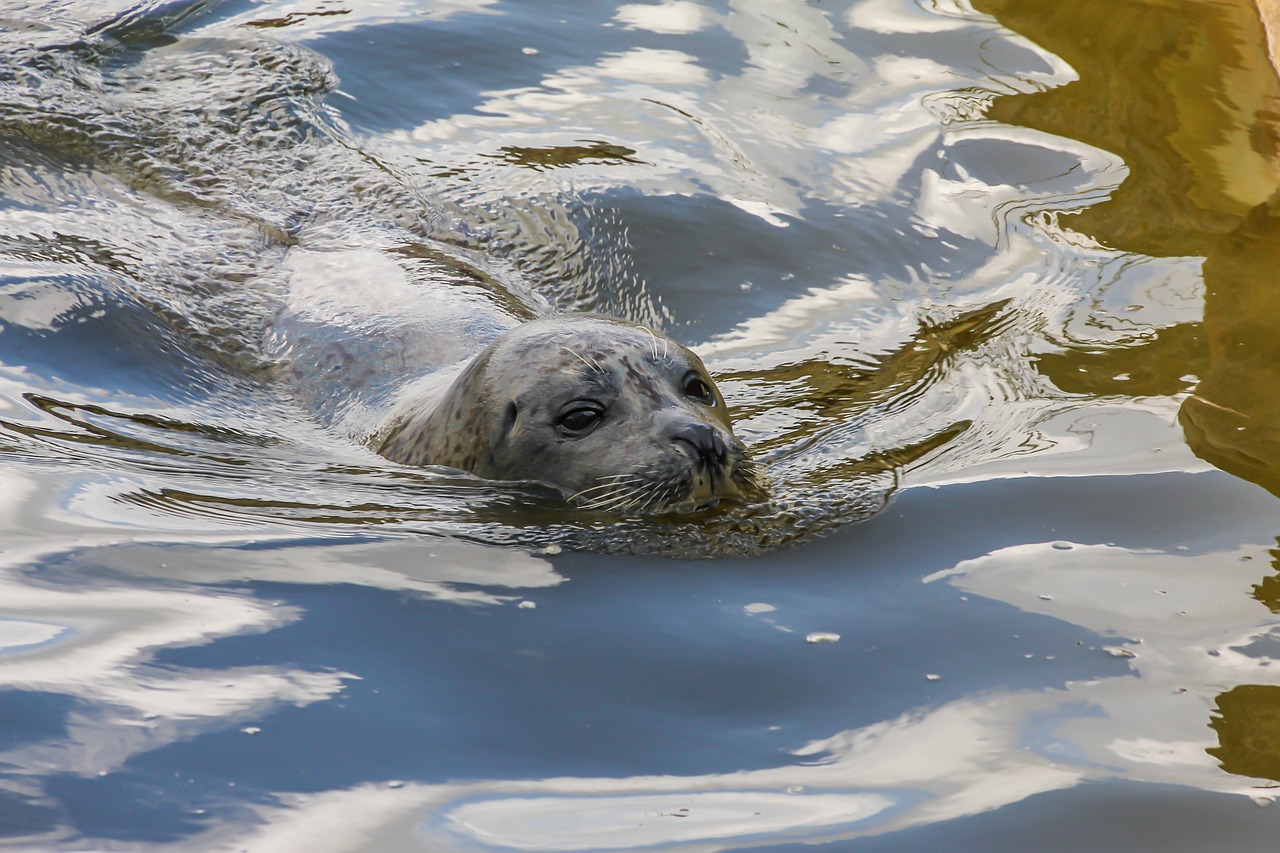
Practicing and Developing Your Style
When it comes to practicing and developing your artistic style, the journey is as important as the destination. Just like a surfer learns to ride the waves, you too must embrace the ebb and flow of your creative process. The ocean of artistic expression is vast and varied, and finding your unique voice can feel daunting, but it’s also incredibly rewarding. So, how do you navigate these waters?
First, immerse yourself in the art of observation. Spend time watching marine life, whether through documentaries, aquariums, or even diving expeditions. The more you expose yourself to different creatures and their environments, the more inspiration you’ll gather. Keep a sketchbook handy and draw what you see. This practice not only sharpens your skills but also helps you develop a personal connection with your subjects.
Next, consider experimenting with various techniques. Don't be afraid to step outside your comfort zone! Try different mediums like watercolors, pastels, or digital tools. Each medium has its own charm and can bring out different aspects of marine life. For instance, watercolor can beautifully mimic the fluidity of water, while pastels can capture the vibrant colors of coral reefs. You might even find that mixing techniques can yield stunning results!
Another crucial aspect is consistency. Just like a diver practices their skills regularly, you need to set aside dedicated time for your art. Consider creating a routine that includes daily or weekly drawing sessions. This commitment will not only help you refine your techniques but also encourage you to explore new ideas. Remember, every stroke counts, and even the most skilled artists started as beginners.
As you practice, keep an open mind about feedback. Share your work with fellow artists or join an art community. Constructive criticism can be a lighthouse guiding you through the fog of self-doubt. Embrace the insights from others; they can offer perspectives you may not have considered. Plus, engaging with other artists can spark new ideas and collaborations that enhance your creative journey.
Lastly, don't forget to have fun! Your artistic style is a reflection of who you are, so let your personality shine through your work. Whether you prefer whimsical interpretations of fish or hyper-realistic depictions of sea turtles, embrace what makes your art uniquely yours. Remember, the ocean is full of surprises, and so is the world of art. Dive in, explore, and let your creativity flow!
- How long does it take to develop a unique art style?
Developing a unique style can take years, but consistent practice and exploration will speed up the process. - Should I stick to one medium or try multiple?
Experimenting with different mediums can help you find what resonates best with your artistic voice. - How can I overcome artist's block?
Take breaks, explore new subjects, or change your environment to reignite your creativity. - Is it important to take art classes?
While not necessary, classes can provide valuable techniques and feedback that can enhance your skills.
Frequently Asked Questions
- What are the best materials for drawing marine life?
When it comes to drawing marine life, having the right materials can make all the difference! You’ll want to invest in high-quality pencils, watercolor paints, and specialized drawing papers that can handle the vibrant colors and details of underwater creatures. Don’t forget to include erasers and blending tools to refine your sketches!
- How can I improve my observation skills for drawing?
Improving your observation skills is like training your artistic eye! Spend time watching marine life in aquariums or documentaries, and take notes on their movements, colors, and shapes. Try sketching from life whenever possible, as this will help you capture the essence of marine creatures more accurately.
- What basic sketching techniques should I master first?
Before diving into detailed drawings, focus on mastering basic sketching techniques such as outlines, shading, and proportions. Practice drawing simple shapes that make up marine animals, like circles and ovals, to build your confidence. Remember, every great artist started with the basics!
- How does color theory apply to marine life drawing?
Color theory is essential for bringing your marine life drawings to life! Understanding how colors interact will help you mix vibrant hues that reflect the underwater environment. Experiment with complementary colors to create depth and dimension in your artwork!
- What tips can help me create depth in my drawings?
Creating depth in your drawings is all about perspective and layering! Use lighter colors for distant objects and darker shades for those closer to the viewer. Adding overlapping elements can also enhance the three-dimensional feel of your artwork, making it pop off the page!
- How important is the background in marine life drawings?
The background is crucial for setting the scene in your marine life drawings! Incorporating elements like coral reefs, seaweed, and other underwater landscapes can enrich your composition and provide context for the creatures you’re depicting. Think of it as the stage where your marine life performs!
- How can I develop my unique artistic style?
Developing your unique artistic style takes time and experimentation! Try different techniques, materials, and subjects until you find what resonates with you. Don’t be afraid to make mistakes along the way—every misstep is a step closer to discovering your personal artistic voice!



















